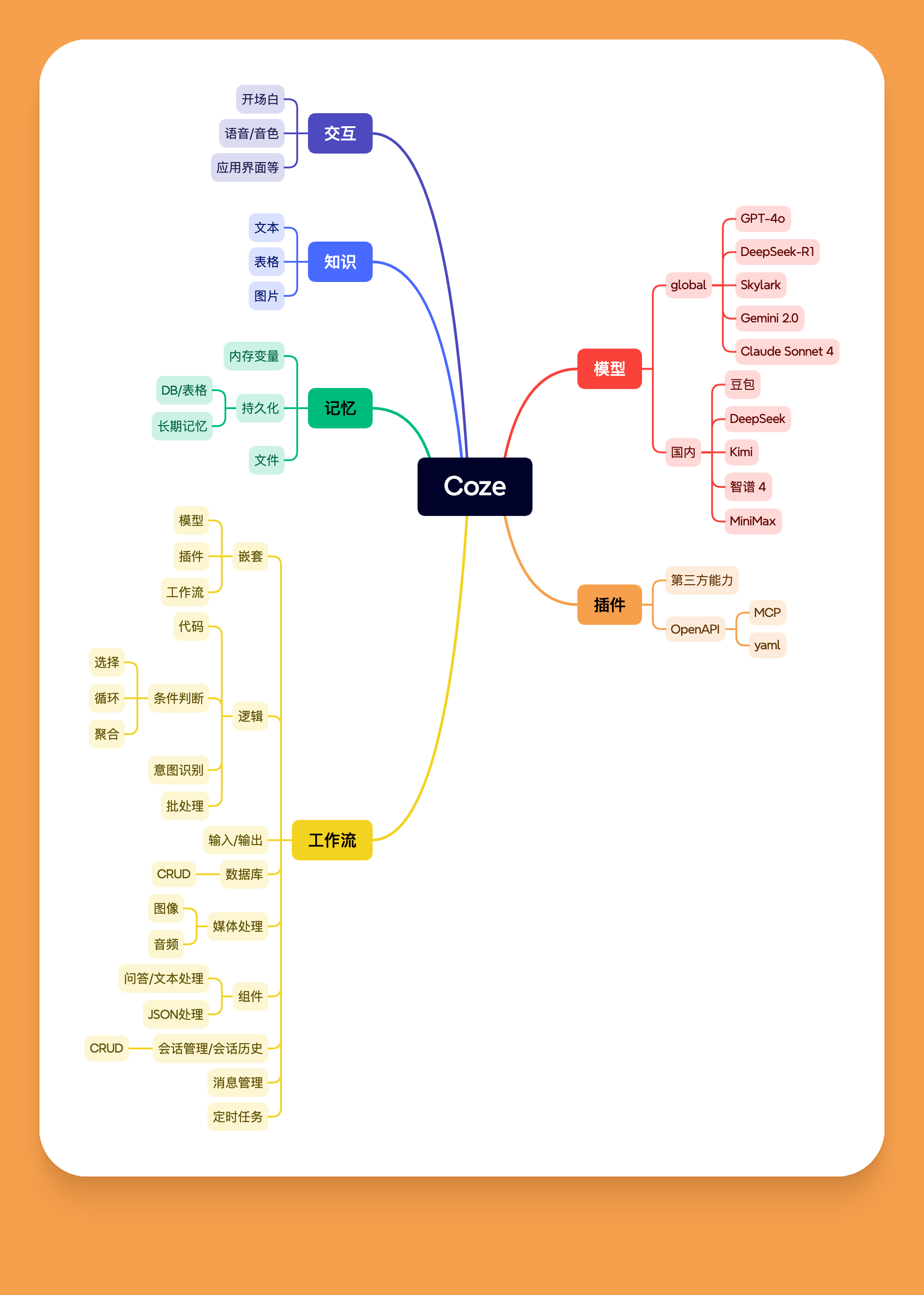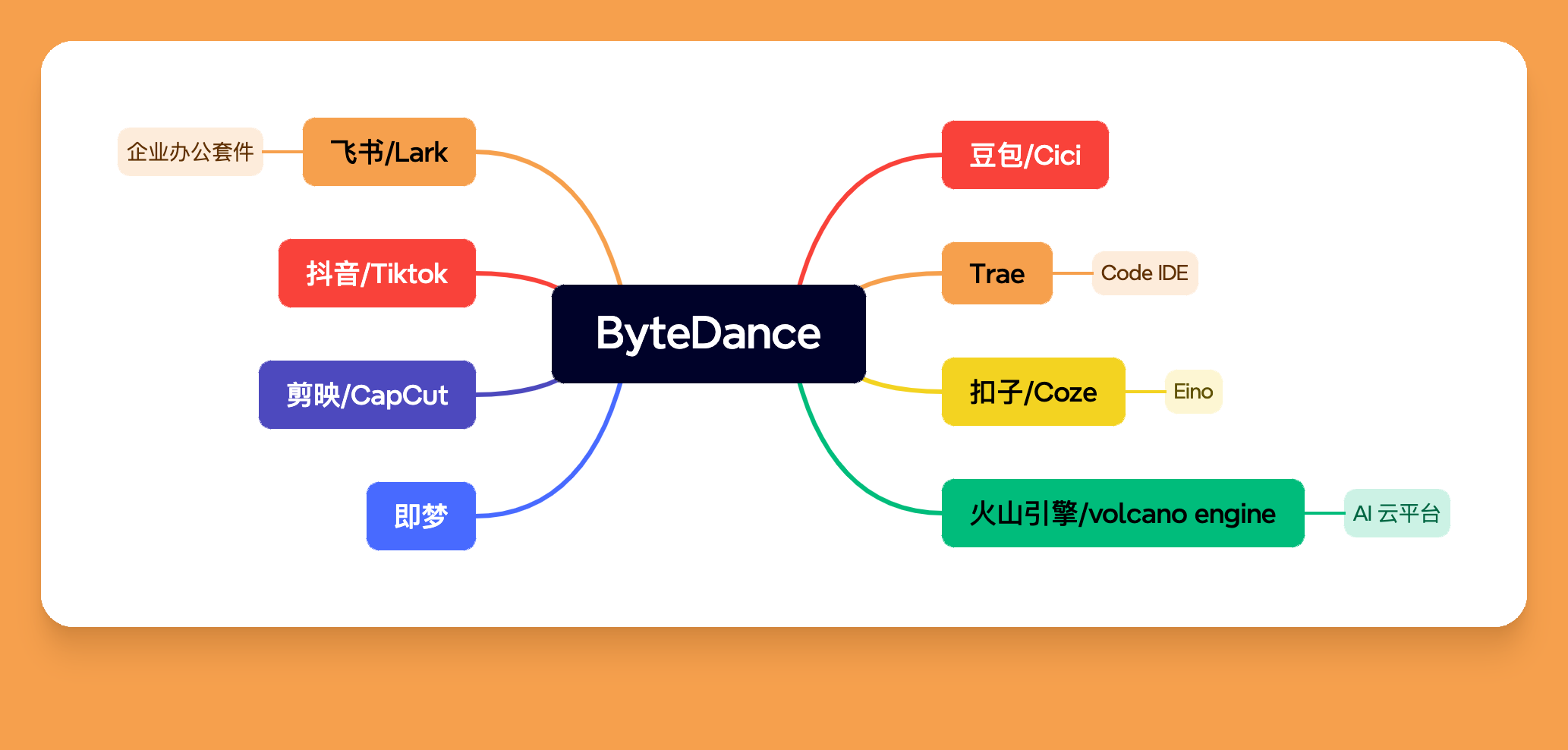Deep Dive into Coze: Open-Source AI Agents and Workflow Automation
2025-07-31
⸻
Deep Dive into Coze: Open-Source AI Agents and Workflow Automation
I. Core Concepts: Layered Abstractions
-
Model = The Brain • The model acts as the “brain” of the AI agent. • For global users: GPT, DeepSeek, Gemini, Claude, Skylark. • For Chinese users: Doubao, DeepSeek, Kimi, Zhipu, MiniMax.
-
Plugin = The Hands and Legs (OpenAPI) • Plugins extend the agent’s capabilities by integrating third-party tools. • Coze uses OpenAPI for plugin development—just like Claude’s MCP protocol. • Nothing magical—just solid engineering on top of open standards.
-
Workflow = The Pipeline • Think of it as a visual pipeline that defines how the agent operates. • Supports conditions, loops, memory, media processing (image/audio), JSON parsing, message handling, scheduled tasks, etc. • Workflows make agents functional and repeatable.
-
Memory = Short-term & Long-term Storage • Mirrors human memory: • Short-term → in-memory variables. • Long-term → persistent storage (database, file system, spreadsheets).
-
Knowledge = Domain Expertise • Enables agents to perform specialized tasks. • Supports different formats: text, tables, images. • Coze provides built-in knowledge bases (Coze KB + Volcano Engine KB). • Unlike n8n, which requires manual RAG integration.
-
Interaction Layer = The Interface • Configurable greetings, voice tone, and UI components to shape user experience.
⸻

II. Real-World Coze Usage
-
Domestic vs International Deployment • coze.cn → Optimized for Chinese models and services. • coze.com → Uses international models. • Both share the same platform and capabilities—only models differ.
-
Plugin Development • You can integrate any OpenAPI-based plugin. • Supports local server plugins as well. • Unique feature: Coze has a built-in cloud-based IDE with Node.js and Python runtimes (powered by Volcano Engine). • This is something n8n lacks entirely.
-
Workflow Execution • User-friendly interface with modular workflow nodes. • Nodes can run models, plugins, custom logic, loops, conditionals, database writes, image/audio processing, and knowledge integration. • Workflows = Orchestration logic.
⸻

III. Coze Studio: Source Code & Architecture
-
Tech Stack • Frontend: TypeScript + React 18 • Backend: Go + Eino Workflow Engine • Database: MySQL (primary), Redis (cache), Elasticsearch (search) • Deployment: Docker-supported local dev & prod environments
-
Database & Config • Agent, Knowledge, Plugin, and Workflow schemas are clearly defined. • Configuration files support dynamic model and plugin setup.
⸻
IV. ByteDance’s AI Ecosystem
Product Type Product Name Description General AI Eino Core AI engine of ByteDance AI Assistant Doubao (CC) Chinese/International chatbot Dev Tools Trae AI-powered IDE AI Agents Coze Role-based agents + workflow platform Content Creation Jimo Text-to-image/video generation Office Suite Feishu Enterprise productivity suite Cloud Infra Volcano Engine Competes with AWS, GCP, Alibaba Cloud Short Video CapCut, TikTok Media creation and distribution
⸻
V. Coze vs n8n: Key Differences
Feature Coze n8n Plugin Mechanism OpenAPI + Built-in IDE runtime HTTP Request-based Local Runtime Node.js & Python (cloud-native) No built-in runtimes Knowledge Integration Built-in KB (Volcano/Coze) Manual RAG setup needed MCP Protocol Not yet supported Fully supported UI Experience Agent-focused, conversational General-purpose automation
⸻
VI. Final Thoughts: Empowering Solo Builders with AI • Model = Brain • Plugins & API = Limbs • Memory = Context • Knowledge = Intelligence • Workflows = Orchestration = Physics of the AI world
Just like humans, agents need logic, memory, and expertise to perform real work.
Your orchestration logic defines the rules. In this AI world, workflows are the laws of physics—AI must not and should not break them.
⸻
👤 Final Note from Cai Yongji
I’m a solo founder building with AI.
If you’re also interested in building AI-powered one-person companies, follow me to learn more about tooling, orchestration, and automation strategies for the AI-native era.
Let’s build the future—one agent at a time.